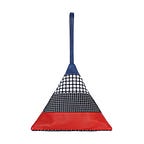| 6. Locus Solus by Raymond Roussel| 10 Things in the Slow and Steady Wins the Race Time Capsule for 2020
There are 6 days remaining in the tumultuous year of 2020 so we thought we would countdown and share with you some of the items and ideas we would put in our time capsule. For us they straddle the very specific space of the timely with the timeless; sometimes sublimely anachronistic, fundamentally classic, and are reflective of a value system we hold true to.
“Raymond Roussel’s works immediately absorbed me: I was taken by the prose style even before learning what was behind it — the process, the machines, the mechanisms — and no doubt when I discovered his process and his techniques, the obsessional side of me was seduced a second time by the shock of learning the disparity between this methodically applied process, which was slightly naive, and the resulting intense poetry.”
— Michel Foucault
Written in 1914, Raymond Roussel’s Locus Solus is a longtime inspiration for our design subconscious in the studio. The novel is an imagination manifested in ideas and vignettes that extend and lead into other mechanisms. Wheels and bridges that are fantastical stream of consciousnesses continuously guide the creative process. Where you arrive is never really where you began from, and so this book goes in our time capsule for this year. A much needed antidote about the power of invention and perspectives.
An excerpt from Locus Solus:
A long rod, also of aluminium, was fixed to one side of the top of the bar, rising obliquely upward to a point above the circular tray where it terminated in a triple ramification. Each of its three branches held upright at its tip a rather large chronometer backed by a round mirror with the same circumference. The three dials, disregarding one another, looked outward in three divergent directions, whereas the three discs of silvered glass confronted a common central area, facing approximately west, south and east respectively. At that moment the first mirror was catching the sun’s image directly and throwing it full on to the second, which transmitted it to the gondola tray — while the third seemed to have no role to play. Each mirror was attached to its chronometer by four finely cogged rods, separately fixed to the top, bottom, left and right sides of its rim, at the back; in all three cases these rods passed right through the chronometer and projected from the other side on the peripheral edge of the dial, at a diameter slightly less than that of the clockwork.
By means of a wide variety of backward and forward movements, the rods,set in motion by invisible cogwheels geared to the chronometer’s mechanism,were capable of inclining the mirrors in any direction. The front of each rod consisted of a small metal ball two-thirds-enclosed within a hollow,incomplete sphere fitted to the back of the operative mirror; this mode of attachment made it easy to adjust the reflecting disc in the most varied directions.The triple system followed the sun’s course every day from sunrise to sunset.
